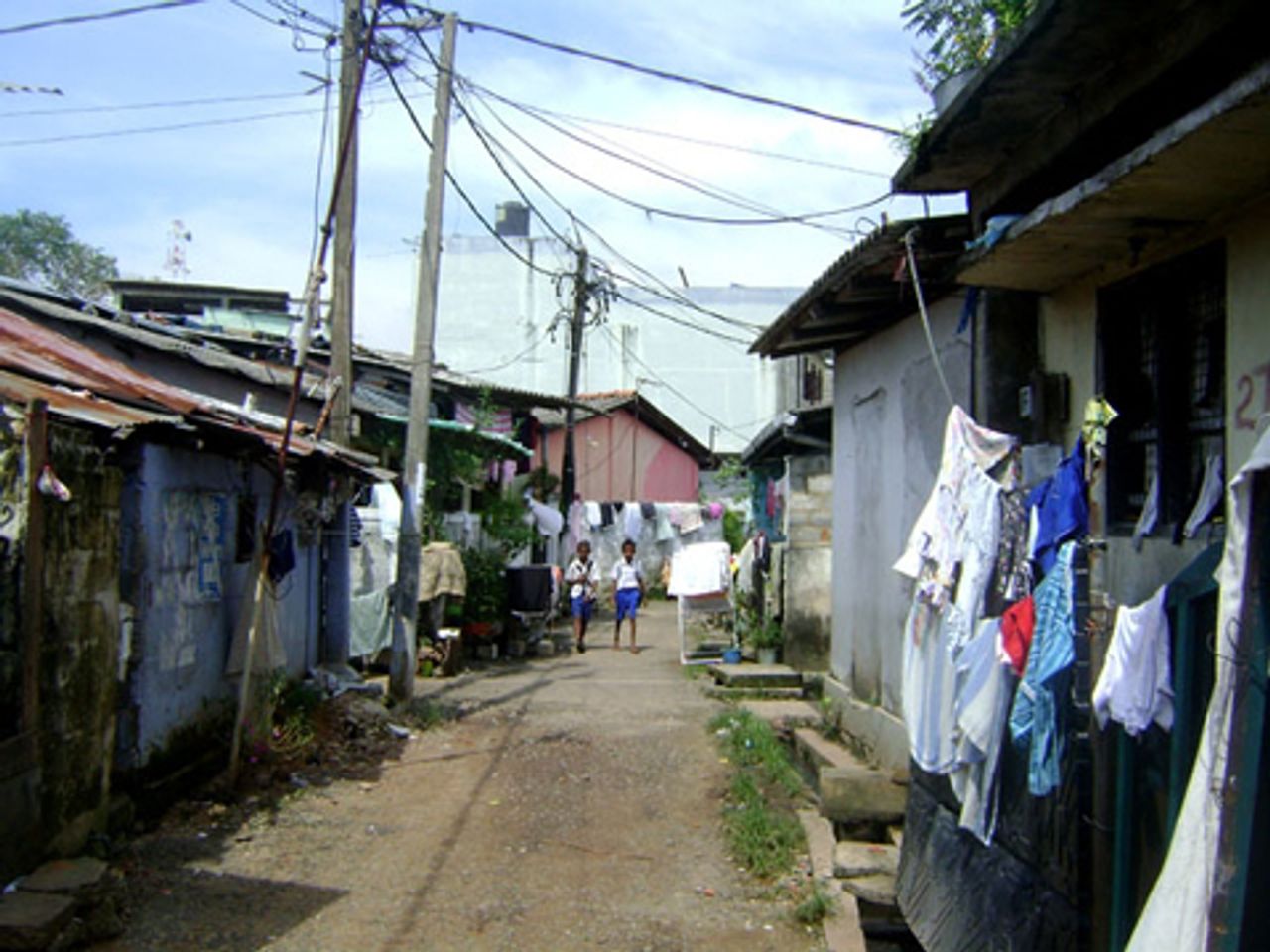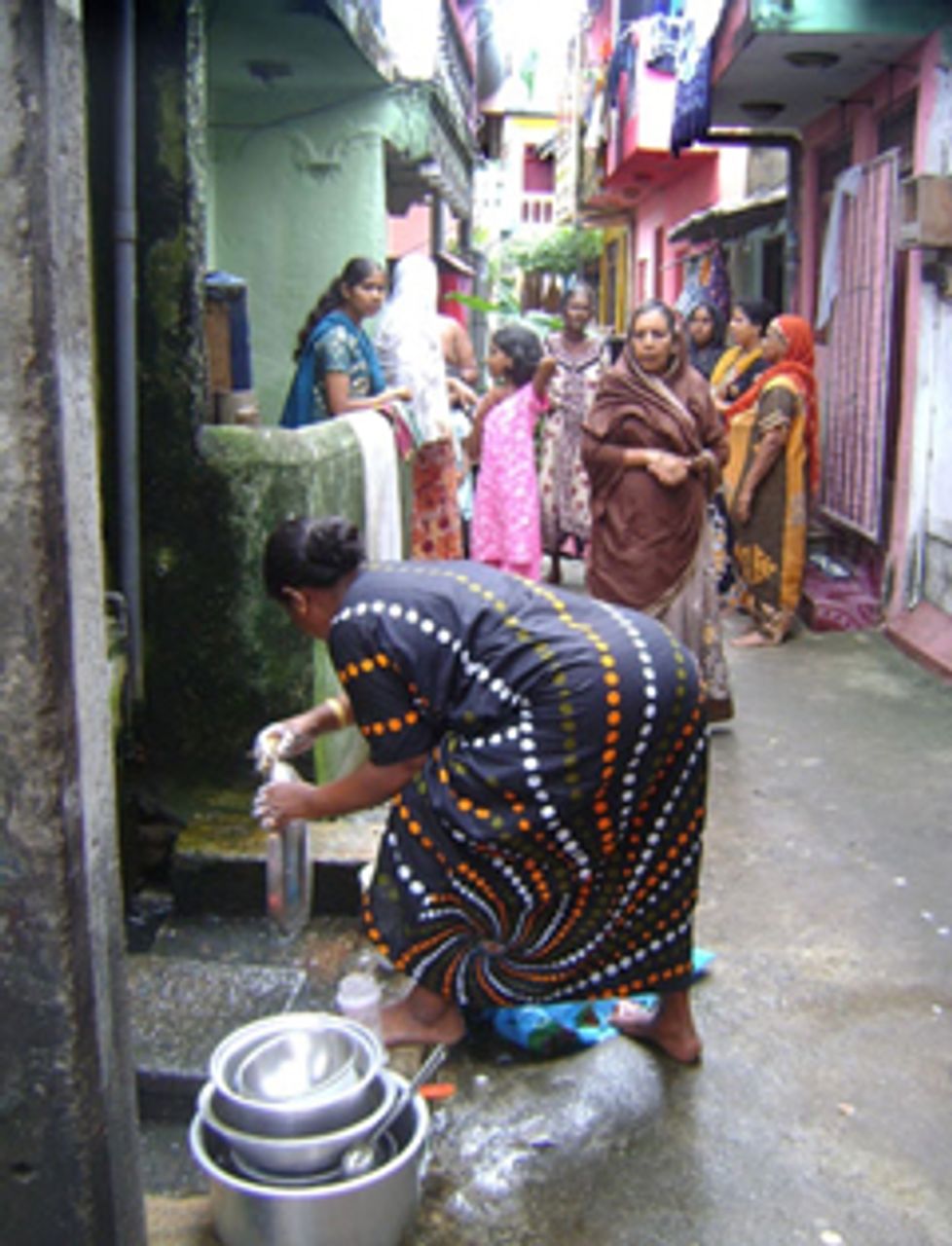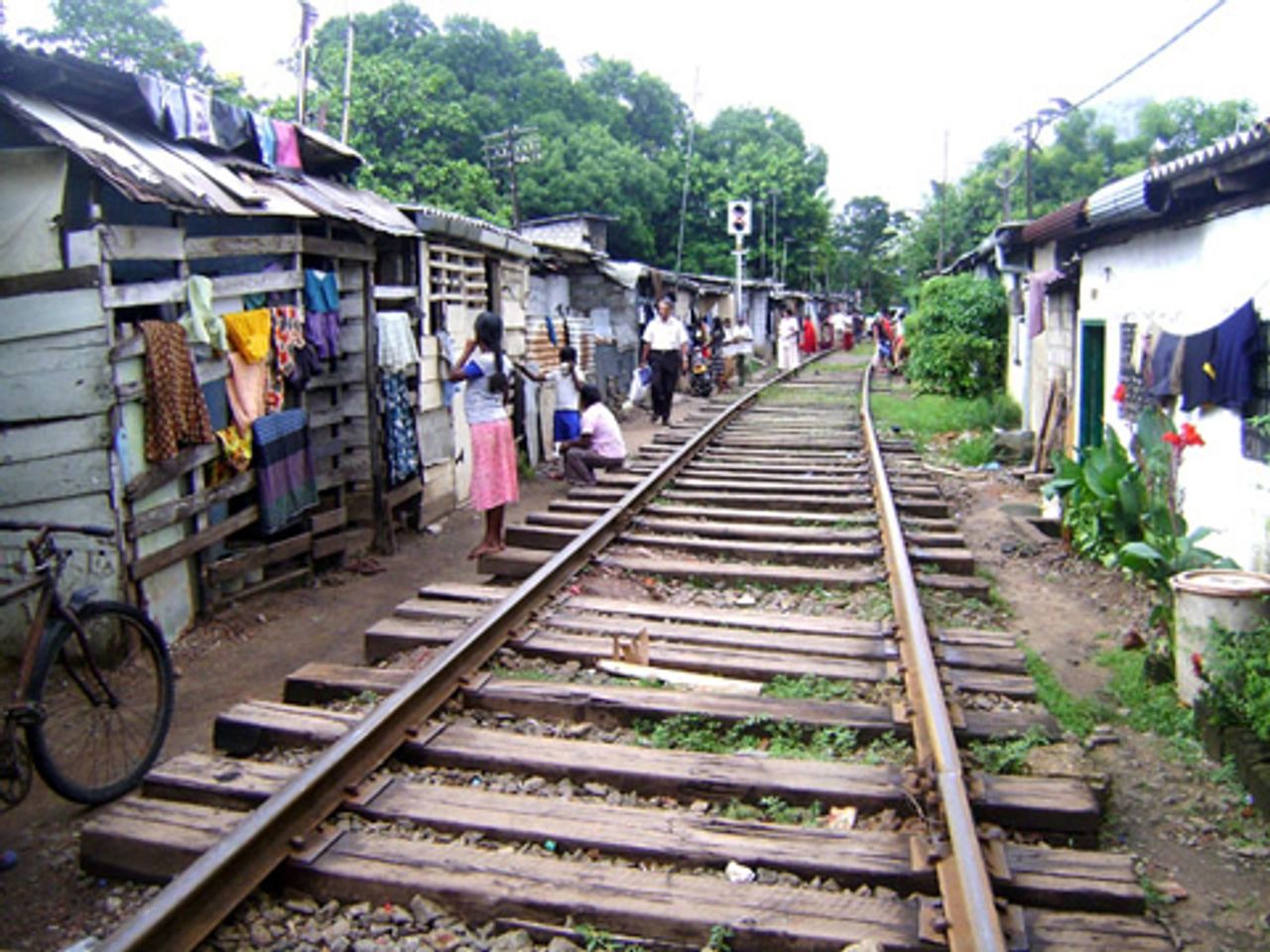Socialist Equality Party supporters recently visited many slum areas in Colombo, where the government has intensified its plans to evict more than 70,000 residents in order to clear land for commercial development. With the political assistance of the SEP, residents from some districts have formed the Action Committee to Defend the Right to Housing (ACDRH) to fight the eviction scheme.
During the past few weeks, Urban Development Authority (UDA) officials have notified families that they will have to leave settlements such as Slave Island, Narahenpita, Barnes place, Borella, Bauddhaloka Mawatha, Wanathamulla and Maligawatta. Earlier, the UDA made similar notifications in north Colombo.
 Part of Wanathamulla to be demolished
Part of Wanathamulla to be demolishedIn the Wanathamulla area, officials pasted red labels with UDA seals on the front walls of houses that must be vacated. On November 17, officials went from house to house in the Church Road area of Slave Island gathering information and taking photographs. About 40 families in the Waththa area of Narahenpita Court near the rail line received eviction letters from the railway department.
President Mahinda Rajapakse’s government is planning the mass evictions as part of its attempts to transform Colombo city into a South Asian business hub. In order to suppress opposition, Rajapakse placed the UDA and the Land Reclamation and Development Board (LRD)—two civilian bodies—under the authority of the defence ministry, which also commands the military.
Despite its promises, the government has no concrete plans to provide houses for evicted families. Rajapakse did not allocate a cent to build new housing for shanty families in the 2011 budget, announced on November 22. While he claimed that the government’s “next priority is to develop 70,000 housing facilities for shanty dwellers,” Rajapakse said an “Urban Development Fund” would be established to meet relocation costs.
Defence Secretary Gotabhaya Rajapakse, the president’s brother, elaborated on the government’s plans on November 28. “The government is faced with the challenge of relocating 75,000 families who are mainly occupying the most valuable land and strategically vital canals in Colombo,” he declared. “We need to develop the city to attract global investors and to make it a beautiful capital.”
Evicted people would be given “space in condominiums which will be built shortly,” the defence secretary claimed. However, he did not say how and where these plans would be implemented. In May, the government evicted 45 families in Slave Island, using the police and army to suppress protests. Some evictees were sent to temporary wooden houses in Colombo suburbs, but these will also be removed. Some families were given 100,000 rupees ($US895) to rent a house for one year.
The government has no plans to build houses for low-income people in Colombo city. UDA director-general Nihal Fernando told the Sunday Times that the slum dwellers must leave Colombo city. Fernando said the demarcated areas for them were Homagama, Gampaha and Kalutara, more than 30 kilometres away. He added: “We cannot allow them to live in the city any longer.”
Most people who spoke to the SEP campaigners opposed the government’s scheme. Wanathamulla resident, Seevalie Waththa, 76, explained: “We have lived here for more than 50 years. When I got married, my husband did not have a house or job. We built this house and started a small shop to earn an income. We cannot leave Colombo. Our children go to nearby schools.”
One official told Wanathamulla residents that the government planned to build flats to sell for 2.5 million rupees ($US22,500). The government would contribute 1.5 million rupees, leaving residents to raise 1 million rupees ($US9,000) to buy a flat. Swarna, another resident, asked: “How could we pay such an amount?”
Baby Nona, another woman, explained how the government institutions had cheated them. People in the area had received letters from the National Housing Development Authority a few months ago, asking them to make payments to obtain legal titles for their houses. Baby Nona paid 30,000 rupees. “I live with my daughter,” she said. “She sold her jewellery to pay the money. But they did not give us a deed. Now they have pasted this notice on our wall and asked us to vacate the place. The Housing Authority has cheated us.”
 Java Lane in Slave Island
Java Lane in Slave IslandForty families live in Slave Island’s Java lane. All use one tap and there are only four toilets. The lanes between houses are only a metre wide. A resident said: “We can’t live here in the rainy periods. We can’t go to the toilets—there are rats. Is this our fault? The cleaning is meant to be done by the government authorities or the Colombo Municipal Council.”
At Slave Island Church Road, where UDA officials recently gathered extensive data, one woman said: “Last May, the police and armed forces demolished houses while people were unprepared. This time we have to prepare.”
Another woman said she had a 60-year-old legal title. “We pay tax, light bills and water bills. My husband and I worked in the Middle East to earn money and build this house. We want houses in Colombo city. We have no trust in this government or any other political party. We will have to protest on the streets to protect our houses. If your organisation is ready to fight honestly for housing rights, we are ready to support you.”
 Narahenpita Usaviwatte slums
Narahenpita Usaviwatte slumsOver the past two decades, successive governments have attempted to evict Colombo slum dwellers. Evictions began in Wanathamulla in 1997, under a plan to clear 30 hectares of land. Because of residents’ resistance, however, the government could only clear one small area. By placing the UDA under military control, the Rajapakse government is preparing to use police-state methods to break any such opposition.
Karunaratne, a Wanathamulla resident, said that in 1997 a “Committee to Protect Houses” opposed the evictions by the United Peoples Alliance government of former president Chandrika Kumaratunga. He said the committee would be reorganised and would seek meetings with Disaster Management Minister A.H.M. Fowzie and other MPs. But some leaders of this committee are supporters and members of Rajapakse’s Sri Lanka Freedom Party (SLFP) who support evicting the poor.
Karunaratne said that after evictions in 2002, people received Sahasapura (Millennium city) flats in Colombo. The Sahasapura units were meant to be a model housing project, but they were allocated to those who could pay 25,000 rupees. That money was supposed to be for maintenance, yet there has been no maintenance. Residents must pay for water and electricity, as well as 150 rupees in quarterly taxes to the municipal council. The condition of these flats has deteriorated because of the lack of repairs and garbage facilities.
SEP campaigners explained to residents that it was dangerous to collaborate with such groups, which support the government’s broad plan to benefit big business, which was bound up with implementing the International Monetary Fund’s austerity measures. Defeating these attacks required a political fight against the government and for a workers’ and farmers’ government based on socialist policies. The SEP team insisted that all people had a right to decent housing, jobs and other welfare facilities. Hundreds of billions of rupees had to be provided for such projects, and that would never happen under the private profit system.
